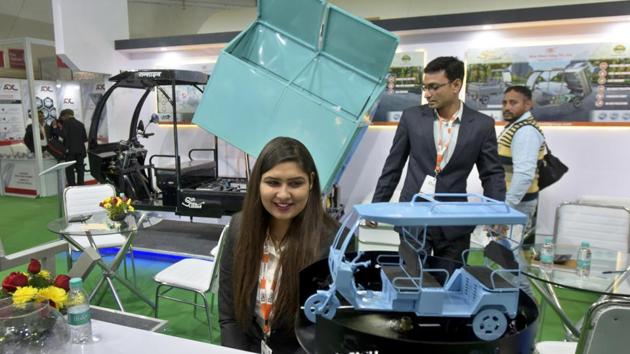Why India lags behind in electric vehicle revolution
The industry should have been given a clear road map to follow, so that the government could effectively implement a carrot-and-stick policy. Without a stick the carrot loses its charm.
On January 30, 2019, the Government of India reduced the customs duty on Electric Vehicles (EVs) that are imported in completely knocked down or semi knocked down state from 15-30% to 10-15%. This, the Centre hopes, will make it more attractive to ship greener vehicles into the country than those run on fossil fuels, and also encourage companies to assemble EVs in India.

In an interview to Hindustan Times, air pollution control strategist Parthaa Bosu speaks on why India lags behind the EV revolution .
KD: In 2018, automobile manufacturers showcased prototypes of EVs at the Auto Expo to indicate their inclination towards developing EVs. But nothing much seems to have happened since then. Why?
PB: I have been seeing EVs (cars and bikes) prototypes since 2008 on display. So you can say it has been a decade, and nothing much has happened. To be fair, the automobile industry today is going through a period of uncertainty.
In 2008-09 there was a lot of discussion about clean diesel technology, then (luckily) diesel was discouraged, and the boost was to an upgraded emission standards, and now EVs. In between, we shouldn’t forget that there are regular news updates on fuel cells and hybrids. I am sure these are nightmares for the automobile industry.
For a company it is matter of a lot of money when we talk about a new power train (the mechanism that transmits the drive from the engine of a vehicle to its axle). At the same time, private companies have the responsibility to understand what their customers want and what society demands. It is not rocket science to see that vehicle numbers are rising, that vehicles contribute significantly to urban air pollution, and that around the world emission standards for vehicles are ever tightening. This is a fact that manufacturers have to plan for.
However, timing is important, and in this case the government is in charge. The industry should have been given a clear road map to follow, so that the government could effectively implement a carrot-and-stick policy. Without a stick the carrot loses its charm.
KD: Is Feebate (a system of charges and rebates whereby energy-efficient or environmentally friendly practices are rewarded while failure to adhere to such practices is penalised) a sound policy for India?
PB: By all means. There is no need to provide any kind of rewards to any industry that is not willing to shoulder the journey of sustainability. It was never the responsibility of the government to be responsible alone. We cannot always push to the government to face the international community to make commitments, which it can’t fulfill unless the industry steps in. But the government should set clear, enforceable timelines. It can also encourage faster change by giving tax rebates to customers buying EVs for example.
KD: To promote domestic assembling of electric vehicles, the Union government has lowered customs duty on import of parts and components of such vehicles to 10% to 15%. Until now, vehicle parts and components imported for assembly in India attracted import duty of 15% to 30%. Will this help?
PB: The government is not clear what it wants. The clarity that we need is: why do we need to lower the customs duty at all? If we are lowering the duties to promote production of indigenous EVs as a solution to cleaner environment then we need to see this more holistically i.e. why reduce it and why not remove it completely for a period?
Why does the transition to clean technology need to be that abrupt? For example, we have few hybrid vehicles being sold in the country. If the government wants to promote clean technology vehicles, then government should first use the hybrid vehicles as a bridge till the time the EV and its infrastructure matures. Then all the hybrid vehicles should not attract any imports duty. We need to understand why does the government tax import: This is because it wants to nurture and encourage the domestic industry. Now either the domestic industry isn’t not capable or the government didn’t give enough time to the industry to prepare the power trains the government plans.
For example, in 2009 when the Chinese government realised they have a pollution problem, they decided to include seven strategic industries that could be nurtured as future industries. Out of the seven, two were alternative fuel and EVs. We probably also need to think longer term, and plan the metamorphosis, hand holding the original equipment manufacturer, and encouraging the users to get used to charging their vehicles just like they do with their mobile phones and smart watches.
KD: Unlike the Centre, Delhi, Karnataka and Telangana unveiled their respective EV policies this year. Will this change the overall scenario? What more needs to be done at the national level
PB: Unfortunately, the Centre needs to initiate policies. It needs to do the exercise to bring the EVs on the roads and then the cities probably can have policies to promote or discourage them. As of today they (both EVs & the required infrastructure) don’t exist. Having a national policy is the best case for the industry. However, having some large markets with policies is better than none at all. It is important to encourage the transition no matter how piecemeal or halting. It is the future of transportation.






